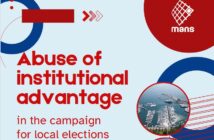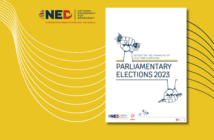Amendments to the Law on Public Procurement, which began to be implemented in May 2015, resolved a number of concerns that have previously plagued the system of public procurement. Still, it is evident that there is a significant number of problems that impede efficient implementation of the law by the contracting authorities and bidders, as well as adequate legal protection and supervision and control by the civil society, media and citizens.
Practice has shown that the monitoring of public procurement, based on information from the Public Procurement Portal, is often impossible for tenders that are complicated and of greater value, due to the fact that all the relevant documents are not publicly available, including any offers that are received with regard to a specific tender.
The analysis has also shown that a larger number of institutions, without any consequence, has been violating the provisions of the Public Procurement Law that restrict the use of direct agreements with suppliers for years, and that some institutions often procured the same goods through several direct agreements, so as to avoid implementing public procurement procedures prescribed by the law.
Data from the report show that a number of institutions has violated the obligation to adopt and publish the procurement plan, which is laid down in the Law on Public Procurement, and that because of the lack of coordination of the Public Procurement Administrationand the Inspection for procurement, which operates within the Inspection Directorate, they do not bear any misdemeanor responsibility.
Moreover, in the reported period, there was no concrete sanctioning of contracting authorities for failing to report on conducted public procurements, although in this case there is a clearly prescribed legal obligation.
Because of all the problems in the public procurement system, in this report, MANS has defined a set of recommendations the implementation of which could enhance the legal and institutional framework, as well as the practice itself.
Complete report download HERE (PDF)



